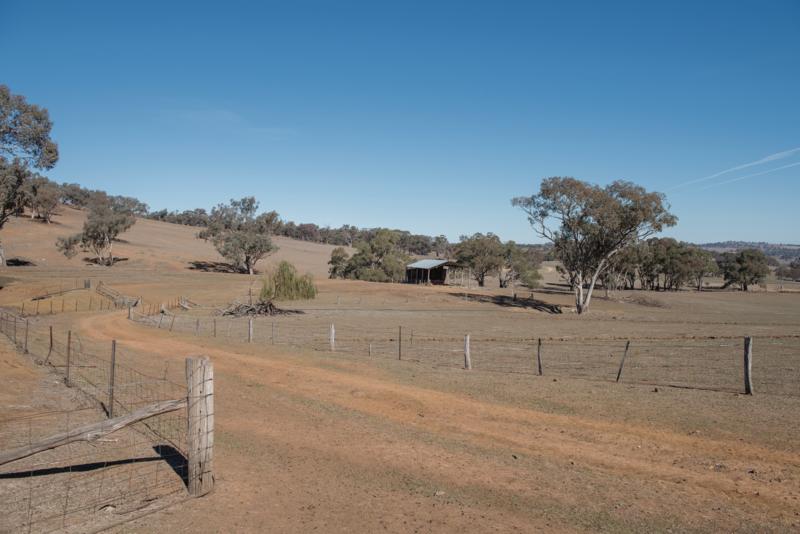Wayne and Lynette Culverson are undoubtedly in drought. But the couple, who run Dohne sheep across three properties totalling 295 hectares north of Orange have taken measures to prepare their business as best they can.
They have been feeding hay to sheep on their Central Tablelands properties since last December, and sold off some stock early this year.“Our last decent rain was in April-May last year and we only got one cut of hay in spring before it got too dry,” Wayne says. “We make our own hay and always have a supply for two years’ worth in the shed, but due to the dry spring we couldn’t fill the sheds again.”
In mid-May, Wayne only had about three weeks of hay left before he would have to buy it in, most likely from Victoria as there wasn’t much in NSW. In January, Wayne says, they made the decision to off-load some sheep. “We classed through our sheep and kept 1,000 of our core breeders. We normally run about 1,800, but I only wish I had sold more.”
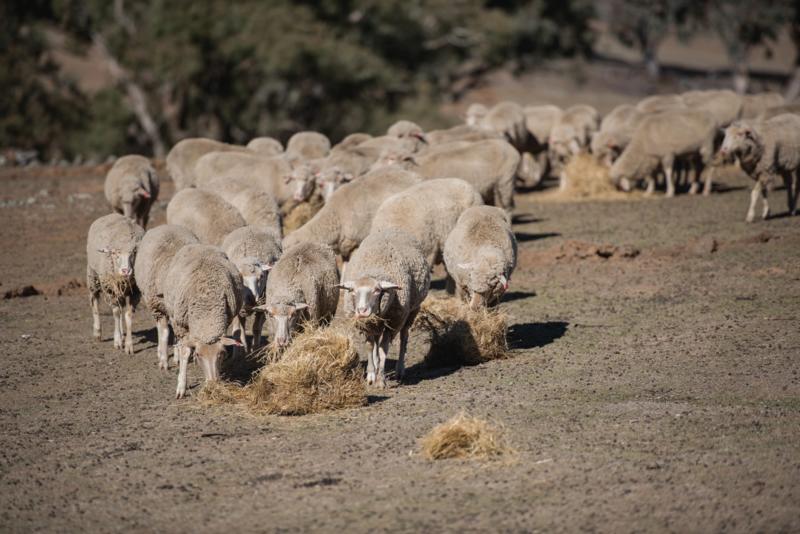
Wayne Culverson feeding forage hay to his Dohne sheep on Dohnedale, one of his three properties near Orange in the Central Tablelands.
Water is also an issue. Dams on one half of the property still have water, but others are dried out. Despite the tough conditions, Wayne says he isn’t feeling too bad. “There is no way I could sell all of my sheep because we are a closed flock [replacement stock is bred on farm], so about all we can do is try to source some feed and hang in there,” he says. The Culversons also decided not to join their ewes in May, but they will join during spring if they get rain.
At 65, Wayne says he has “been through some bad droughts”, but this is the first time he has had to make the decision not to join his ewes. “It’s the decision we have made and one we have to carry through,” he says.
“It’s upset our breeding and we are down about 50% of our wool clip, which reduces our income for the next 12 months. It’s hard but we will get through.”

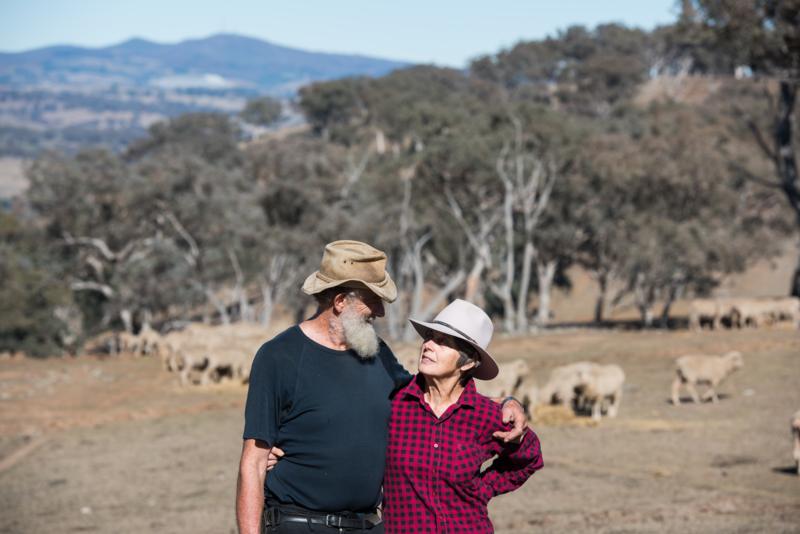 Wayne and his wife Lynette are supporting each other and making plans for getting through the difficult times.
PAST LESSONS: FODDER FOR THOUGHT
Wayne and his wife Lynette are supporting each other and making plans for getting through the difficult times.
PAST LESSONS: FODDER FOR THOUGHT
Wayne says the experience of previous droughts has taught them to look after their own mental health, support each other and make plans. And they are certainly not alone, with farmers across the state battling drought or worsening dry conditions.
The
NSW Department of Primary Industries’ (DPI)
Combined Drought Indicator in early July showed 40.7% of the state was in the drought onset phase, 13.5% was in drought and 45.5% was in a watch phase. Drought watch means that conditions have deteriorated, but are not yet critical. Less than 1% of the state was classed as non-drought or recovering.
The past summer has been referred to as one of the driest in recent memory. Some farmers have been feeding livestock since before Christmas. Others report dry dams that they’ve never seen empty before. While the situation is tough, farmers across the state have learnt from drought in the past and are getting on with the job of making the best management decisions for them and their farms, looking after livestock and thinking ahead to how they might recover.
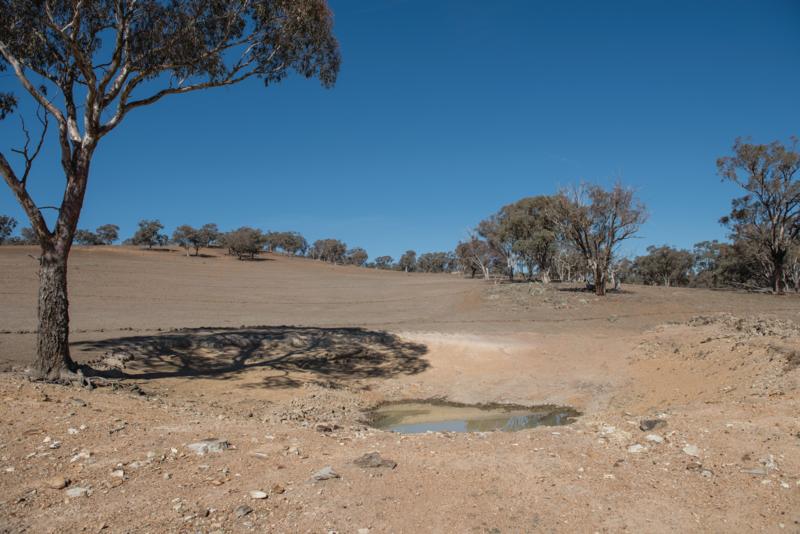 Water becomes a greater concern for the Culversons as dams continue to dry out and their hay sheds near empty.
Water becomes a greater concern for the Culversons as dams continue to dry out and their hay sheds near empty.
PLANNING FOR DROUGHT
In April, the NSW government announced a
Drought Transport Fund, which will provide farmers with low-interest loans, up to $20,000, with a two-year interest- and repayment-free period to cover freight costs for fodder, water, or to move stock to agistment. The government says the fund adds to the existing NSW Drought Strategy, which includes a rural resilience program, rural support workers and financial counselling, and the Farm Innovation Fund for on-farm drought preparedness work and capital improvement.
In May, the government announced the appointment of a state drought coordinator, Pip Job, a former Rural Woman of the Year and DPI senior project officer. Pip’s role is to work with affected farmers and communities to help ensure the right assistance is provided and coordinate the government’s drought response.
NSW Farmers’ Rural Affairs Committee chair Sonia O’Keefe, a farmer from Walcha, says that, while the bulk of the state is in drought or is very dry, conditions vary, with some farmers having a good season. Others are in drought but are not yet feeding livestock, and others have been feeding since October last year.
BETTER PREPARED FOR DROUGHT CONDITIONS
Economically, Sonia says to date, farmers are better prepared and commodity prices, while slowing, have been good. While she says there doesn’t seem to be much, if any, agistment available, there is still fodder and grain to be found, although it is being purchased from further afield. With no break in the dry conditions in autumn, any opportunity for sustaining feed has gone. “Farmers will reassess and figure out how to manage,” Sonia says. “They are in a constant stage of reassessing. No doubt it’s really tough, but farmers are managing it well.
“Drought doesn’t come along when it suits someone to have a drought, so it will always come along for some people when there is something else going on – on the farm, or personally.”
*For more stories about farmers dealing with drought and adapting during dry conditions read, ‘
Growing profits behind the wire’ and ‘
Young gun farmer creates drought lifesavers’.
In May this year, NSW Farmers’ president Derek Schoen wrote to the state and federal governments to alert them to the growing threat. “For the second year the autumn rainfall has been lower than average and farmers are again putting in place strategies to manage the decreasing availability of water and fodder,” he wrote. “For many farmers across the state who have had little rain and now, with very low soil moisture, their productive capacity is negligible.”
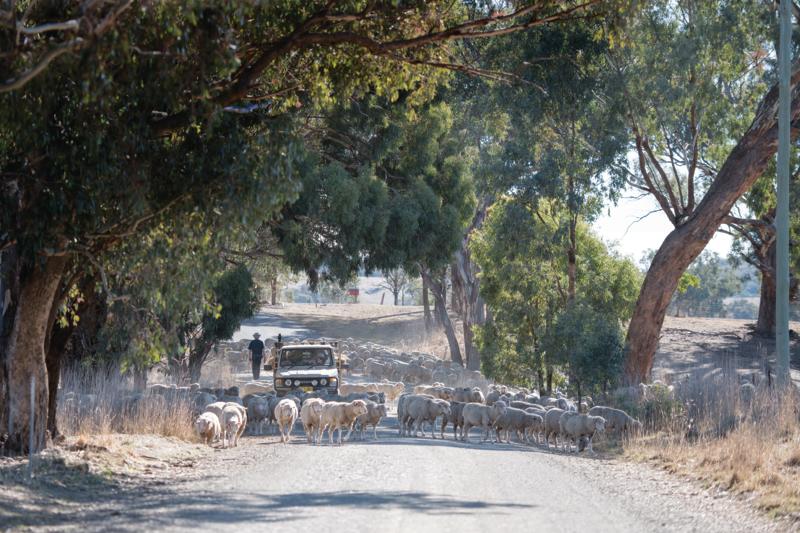 Wayne takes about 300 sheep a kilometre along the stock route in search of feed.
Wayne takes about 300 sheep a kilometre along the stock route in search of feed.
Good news came in June, when the state government announced a wide range of assistance measures for farmers. Help for farmers and their families facing drought was boosted by $284 million in the NSW Budget 2018, bringing the NSW government’s drought relief package to over half a billion dollars. Find out more about the new assistance measures
here.
According to the
Bureau of Meteorology (BOM), January to April this year was the seventh driest such period for south-eastern Australia, while for southern Australia rainfall in April was the third lowest on record for that month. BOM senior climatologist Blair Trewin says the seasonal conditions have been dry through the central and eastern parts of NSW since April 2017 and since January this year it has been “significantly drier than usual” in the southern and central inland areas of the state.
“Most of the western half of NSW has had less than 50mm of rain this year and there has been less than 10mm around Broken Hill,” Blair says. He adds that the dry conditions have been caused by a lack of tropical moisture moving south. Record high temperatures during autumn exacerbated evaporation and resulted in lower soil moisture.
“A lot of NSW gets a large part of rain during the summer and early autumn but there has been no moisture from the north,” he says. “The outlook is for a neutral chance of above or below average rainfall.”
THE HIGH PRICE TAG OF DROUGHT ON NSW FARMERS
It’s been more than 20 months (as of late June) since there has been a decent rain at Menindee in the state’s far west. And, while Terry Smith of Scarsdale Station, between Menindee and Broken Hill in Western NSW, knows it is a “dry neck of the woods”, he says the conditions are getting out of hand. Terry runs Merinos and Dohnes as well as Hereford and Angus-cross cattle across 66,000 hectares and says they recorded their last decent rain in October 2016 and have had just 125mm since January last year. The yearly average is about 225mm. “We are currently de-stocking and we are back to about 50% of our numbers, with just the core breeders left,” he says.
Normally, he runs between 7,000 and 8,000 ewes, but those numbers are back to fewer than 4,000, along with about 130 cattle. Terry says they have been feeding since October last year with fodder consumption from then until now sitting at more than 600 tonnes. “The feed cost in the last financial year is well into the hundreds of thousands; it is getting to be a significant drain on cash flow.” While they are used to dry periods in their area, Terry says normally they would try to put stock on agistment, but that isn’t an option. Because it’s been so dry over such a large period, there’s no availability.
Large numbers of kangaroos are exacerbating the problem. “The kangaroos are in their thousands and they have put so much grazing pressure on us,” Terry says. “They are dying of starvation in large numbers and the government, which by default owns these animals, is doing nothing.” Terry says he is constantly looking at options and everyone is doing the best they can. “It has to rain one day.”
